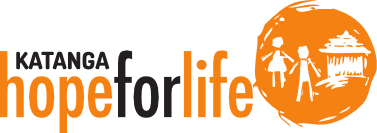Violence Against Women & Girls
By Mutebe Joshua
Joshua works as the Programs Manager in Advocacy for John Paul ii Justice and Peace Centre, promoting awareness and providing creative responses to issues of Justice and Peace throughout Uganda. He gained a Bachelors degree in Education, majoring in economics and history, and a Masters in Peace & Conflict Studies.
Joshua is also a co-founder of Hope for Life Katanga.
“Violence against women and girls is one of the most systematic and widespread human rights violations. It is rooted in gendered social structures rather than individual and random acts; it cuts across age, socio-economic, educational and geographic boundaries; affects all societies; and is a major obstacle to ending gender inequality and discrimination globally. ”
In Uganda violence against women and girls has many manifestations, namely; physical, sexual, emotional and economic. The most common forms include domestic and intimate partner violence, sexual violence (including rape), sexual harassment, and emotional/psychological violence. Other widespread forms around the include: sexual exploitation, sexual trafficking, and harmful practices, such as female genital mutilation/cutting (FGM/C), forced and child marriage.
Despite efforts by the government of Uganda and other local, national and international CSOs, violence against women has been increasingly recognised as normal trend at individual and community level yet this in the eyes of human rights activists remains a serious challenge for development. Unfortunately to date, the adoption of legislation to regulate and protect women and girls from violence has been pending for several years. Thus, in the absence of such a law, protection is piecemeal and fracture.
It is evident in many rural and urban communities in Uganda, women fear taking their cases to courts due to their cultural background that does not encourage them to address relevant issues through courts. Even those who overcome the issue of fear face the challenge of paying for costly legal assistance. Whereas many discriminatory laws have been revised, difficulties persist in that the populations are not informed about the gender sensitive laws that have been enacted, nor are they informed about their rights under these laws.
While several legal instruments and policies have been passed to curb violence, the practice has not withered. It has instead increased notwithstanding that a number of interventions to curb it have been undertaken both at national and community level. Several studies over the years have pointed to high levels of violence against girls and women in Uganda as majorly a norm practised by the societal poor.
Surprisingly, in many interactions I have heard with working women in corporate companies/ reputable organisations it was observed many have suffered physical violence. Statistics from Uganda Women’s Network, a coalition of different human rights organisations advocating for respect of women rights, reported 35% of women having suffered some form of marital violence. In the majority of cases, the perpetrators came from the community – predominantly husbands or ex-partners. While all this happened only 2% reported the violence or wished to talk about it. Many preferred to suffer silently and felt ashamed to talk about the violence they were facing.
“Many [women] preferred to suffer silently and felt ashamed to talk about the violence they were facing.”
In conclusion therefore, in order to address violence against women in Uganda today, there is need for collaborative, holistic efforts to engage the community in challenging the discriminatory norms and stigmatising attitudes that perpetuate violence. Secondly, service providers i.e. CBOs, NGOs should provide a mechanism to support survivors' immediate and long-term needs with collective advocacy to promote human rights, gender equality and women’s empowerment.
It's important that you join the pursuit of gender equality and women's empowerment too, by highlighting to your friends and family these issues that are detrimental to women and girls around the world. The second thing you can do is to support education for girls and women's empowerment through providing vocational training.




